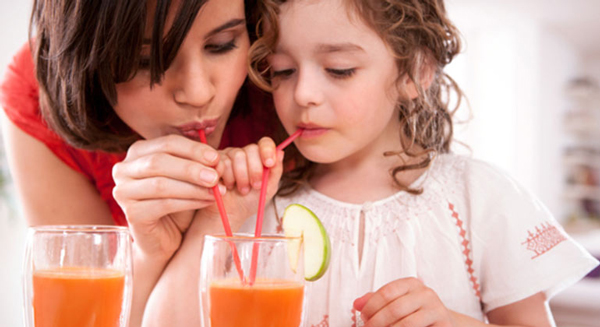Juicing or blending?, one of the most frequently asked questions by people who’ve decided to shift their approach on healthier lifestyle. The truth is, both juicers and blenders are effective endurance-boosters and will help you reach your healthy goal, but the appliances deliver different results and it all comes down to one thing – what exactly are you looking for?
Both slow masticating juicer and a blender are designed to help you consume the recommended amount of essential nutrients your body desperately needs; the nutrients found in raw fruits and veggies you probably have hard time including in your diet. Let’s be honest here, how many servings of fruits and vegetables you eat every day? One banana and ½ cup steamed broccoli doesn’t cut it. Did you know that you should eat about 5 cups of fruits and vegetables total?
With both juicing or blending you will eat the recommended daily amount of fruits and vegetables. But which is better, juicing or blending? Let’s explore both options and see which one is a better for you.

Advantages Of Blending
- Blending uses all of the fruits and vegetables, including the fiber, so it is healthier than juicing for certain purposes. It’s is almost the same as eating your fruits and vegetables raw.
- Blending requires a little fewer fruits and vegetables, because most recipes for blending include water and ice, which reduces your cost of produce.
- The only equipment to prepare a glass of smoothie is a blender, which is less expensive than a juicer slow masticating type.
- In addition to veggies, fruits and water, the blender allows you to add a variety of other foods and flavours, such as protein powders, nuts and other healthy foods.
Advantages Of Juicing
- Juicing with a masticating juicer slow leaves the plant fibers behind, but it extracts almost all of the nutrients and water from the vegetables and fruits. Although fiber is essential for your body, the juice is easier to digest. If you want to give a rest to your digestive system, juicing is the better option.
- A glass of juice contains more veggies and fruits than a blended serving.
- Some foods are just better suited for masticating juicer slow. For example, kale, spinach, bok choy and other leafy greens do not taste good when blended; they add density to smoothies, making them not as flavourful.
- Another reason to invest in a masticating juicer slow, is higher nutritional value of the juice. When using a blender, the fruits and vegetables are cut and chopped by a blade, which means there is oxidation which destroys some of the vital vitamins, proteins, minerals and enzymes.
- Blenders slightly heat up the ingredients (even if ice is included), but the juicers don’t. That means that you must drink the mixture as soon as you are done blending, in order to get more nutrients.
























